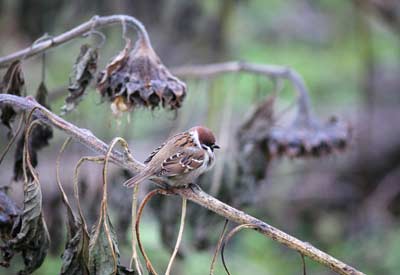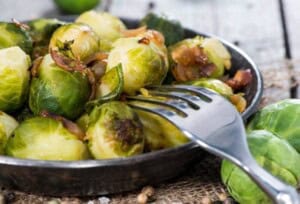Putting gardens to bed in the fall is something like putting children to bed for the night. Both are multi-step processes. Kids need to change out of their clothes, bathe and/or wash their faces, brush their teeth, and might even need a bedtime story. Gardens? They can be as reluctant as kids when its time to go to bed. It might take you weeks to get them there.
Preparing gardens for winter can have huge rewards come springtime. I’ll admit I am both reticent and lazy when it comes to tucking the garden in for the winter. But prompt and considered work this time of year means less work in the spring. And isn’t gardening a four-seasons activity?
This is the time of year we follow the weather carefully. If there’s even a chance of a freeze, we break out the old sheets — our more organized neighbor has sheets of Visqueen — and cover everything that’s still showing life and the promise of production.
With the right gardening supplies prepping your winter garden is easy! Planet Natural has everything you need: composting bins and tumblers for recycling yard waste and organic soil amendments for improving next year’s crop.
We remember one season where a late-summer frost around September 15 was followed by sunshine and weeks without a freeze. Were we glad we’d covered everything we had. Tomatoes continued to ripen into October and lettuce, spinach and the like granted us cut-and-come-again cuttings, even if their growth had slowed to a crawl. That’s often the case. Even after successive frosts some of the hardier plants will still provide a harvest, especially those from late season second (or even third) plantings. But only if they’re protected and the freeze isn’t too hard.
Of course, there are other tricks, like watering, that might help your garden survive the first frost. But eventually, it’s time to accept the fact that it’s time to put the kids — I mean the garden — to bed. First things first. Any wilting or blackened plants should be pulled as soon as they’re spotted. How many times have we left our dead plants for the next weekend (see “lazy” above) only to suffer an early snowfall that usually meant they were there for the season?
Dead plants left in your garden overwinter will harbor disease, fungus, and insect pests in the form of eggs. That’s why it’s important to pull them promptly. If they haven’t blackened or show other signs of mold and fungus, they can go in the compost pile. But if they show any sign of disease, stuff them carefully in garbage bags to prevent shaking spores to the ground and put them in the trash. Or burn them where legal. Just don’t give them a place to overwinter in your compost which you’ll spread in your garden the next year.
Some of your crops will overwinter right where they are. Root vegetables — carrots, beets, rutabaga, and late season turnips — will be fine right there in the garden until the ground freezes deeply, especially if you mulch them well. Sometimes a good freeze will even improve their taste, as it does for kale, cabbage, broccoli and other cole crops. Other in-the-ground crops like onions and garlic will be fine for a while, especially mulched, but it’s best to get them out of the ground before the really cold weather sets in and get them drying in an appropriate place like your attic.

Nature gives us plenty to mulch with this time of year. Leaves are perfect but be aware that they’ll compact over the winter and provide less protection as the season wears on. We like to add some other types of mulch — seedless hay or even wood chips — to give them some bulk. Chopping leaves up first will make them ready to work into the soil come spring. Leaves left whole will have to be raked away, not a bad thing at all. You can find more on leaves and leaf mulch here.
Eventually, we like to cover our whole garden plot in mulch of some kind. One year we had an abundance of stall cleanings from a nearby goat farmer and the next year’s results were spectacular. Cover crops are also a good idea (we’ll post more on them soon). But before you mulch or plant cover crops, take time to turn over your soil with the rototiller or a spading fork. Then let it set for a day or three. This gives your friends and mine — the birds — a chance to feast on the grubs and seeds that are exposed. The pests they don’t get won’t likely make it long when exposed to the elements.
How do you prepare your garden for winter? Most importantly, if anybody has a cure for the lazy feelings I get looking at the garden during autumn, let me know.











